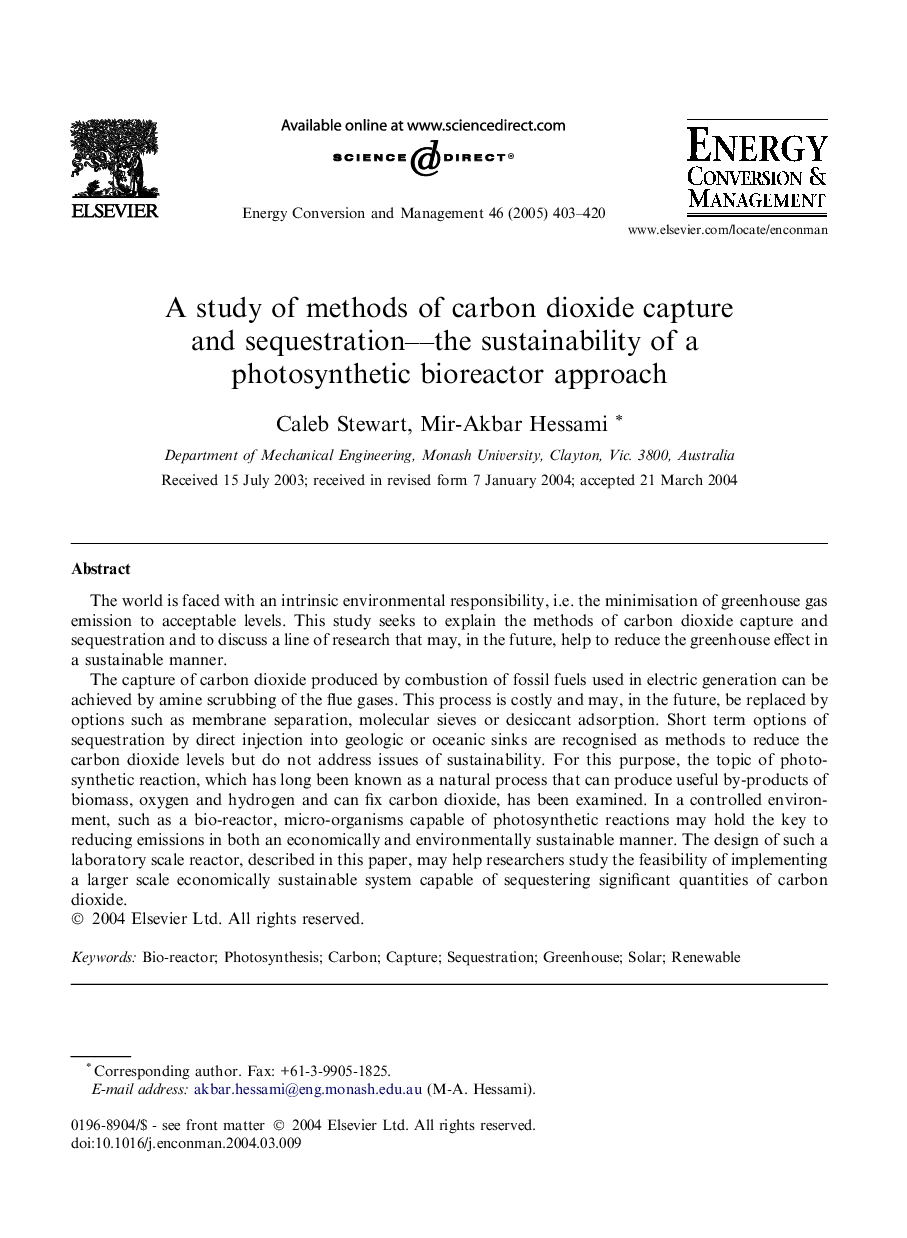| Article ID | Journal | Published Year | Pages | File Type |
|---|---|---|---|---|
| 10414827 | Energy Conversion and Management | 2005 | 18 Pages |
Abstract
The capture of carbon dioxide produced by combustion of fossil fuels used in electric generation can be achieved by amine scrubbing of the flue gases. This process is costly and may, in the future, be replaced by options such as membrane separation, molecular sieves or desiccant adsorption. Short term options of sequestration by direct injection into geologic or oceanic sinks are recognised as methods to reduce the carbon dioxide levels but do not address issues of sustainability. For this purpose, the topic of photosynthetic reaction, which has long been known as a natural process that can produce useful by-products of biomass, oxygen and hydrogen and can fix carbon dioxide, has been examined. In a controlled environment, such as a bio-reactor, micro-organisms capable of photosynthetic reactions may hold the key to reducing emissions in both an economically and environmentally sustainable manner. The design of such a laboratory scale reactor, described in this paper, may help researchers study the feasibility of implementing a larger scale economically sustainable system capable of sequestering significant quantities of carbon dioxide.
Related Topics
Physical Sciences and Engineering
Energy
Energy (General)
Authors
Caleb Stewart, Mir-Akbar Hessami,
